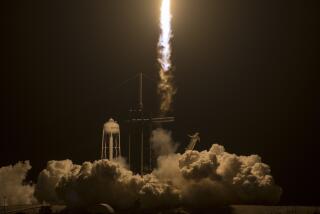The Space Shuttle Catastrophe Off Cape Canaveral
- Share via
To anyone involved in the business of rockets, the space shuttle catastrophe came as little surprise. I make that statement not from the wisdom of hindsight, but from personal experience.
Those in the know in the aerospace industry--the designers, engineers, builders and experimenters--have, for many years, referred to the space shuttle as “the Flying Bomb.” It is a logical epithet.
Liquid hydrogen and liquid oxygen make up the most volatile rocket propellant combination we know of, second only to hydrogen/flourine. And the space shuttle crew sits just a few feet away from more than 500,000 gallons of the stuff. That, together with hundreds of thousands of pounds of solid propellant in the boosters plus miscellaneous on-board chemical propulsion systems can make for one big incendiary.
Hopefully, the general public will now have what the scientists and engineers on this project have always had: a sober and realistic view of what we’re dealing with.
GEORGE MORGAN
Oxnard
Morgan is president of the Pacific Rocket Society.
More to Read
Sign up for Essential California
The most important California stories and recommendations in your inbox every morning.
You may occasionally receive promotional content from the Los Angeles Times.













